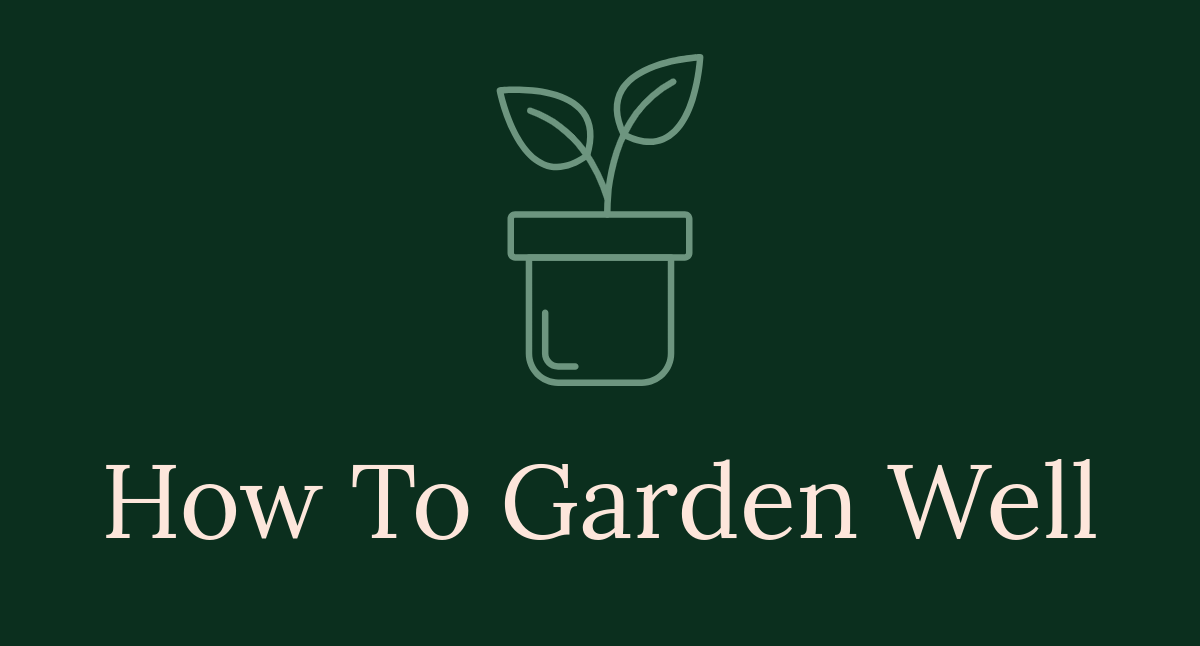
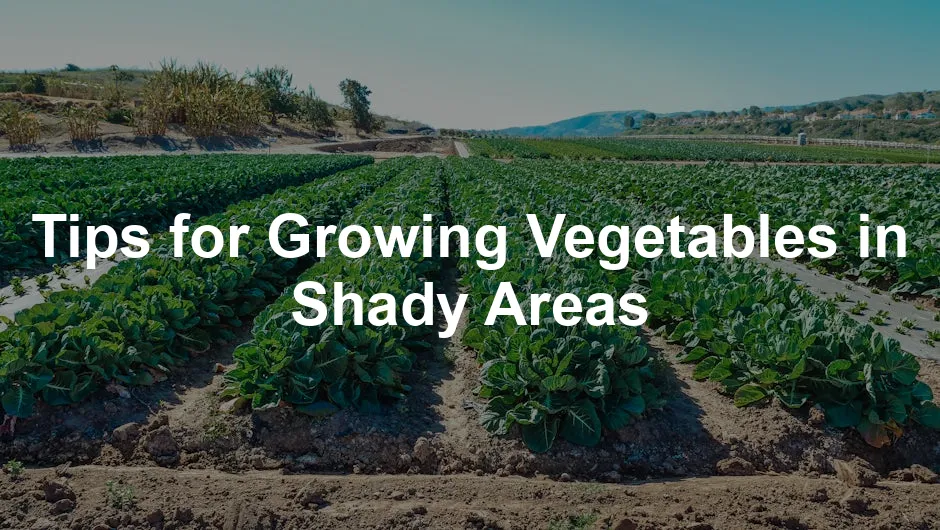
Tips for Growing Vegetables in Shady Areas
Introduction
Gardening in shaded areas can feel like a challenge. Many believe that only sunny spots yield productive vegetable gardens. However, this is a misconception! Shady spots can be just as fruitful. Cooler temperatures can benefit certain crops, making them less prone to bolting. Yes, that means no more scrambling to harvest your greens before they go to seed!
Shade gardening offers unique opportunities. It allows you to grow veggies that thrive in lower light conditions. This article will provide practical tips for successfully cultivating vegetables in these less-than-ideal environments. So, roll up your sleeves and get ready to transform your shady garden into a hidden gem of fresh produce!
Understanding Shade Conditions
Types of Shade
Understanding the type of shade in your garden is crucial. There are four main categories:
- Full Sun: This is where the magic happens—6 or more hours of direct sunlight daily. Most vegetables thrive here.
- Partial Shade: Areas receive 3-6 hours of sunlight or filtered light. This is often the sweet spot for many leafy greens.
- Full Shade: Less than 3 hours of direct sunlight. Most vegetables won’t thrive here, but some hardy plants might surprise you!
- Deep Shade: Little to no light penetrates. Usually, this is not suitable for growing vegetables, but some herbs can still manage.
Assessing Your Garden’s Sunlight
To make the most of your shaded space, observe your garden throughout the day. Take notes on how sunlight shifts with the seasons. Is there a sweet spot that gets more light at certain times?
Understanding your garden’s microclimate is essential as well. Maybe there’s a wall that reflects sunlight or a tree that lets in dappled light. Knowing these patterns helps you choose the right plants and maximize your harvest. Happy gardening!

Choosing the Right Vegetables
When it comes to gardening in shaded areas, the right vegetable choices can make all the difference. Many gardeners abandon the idea of growing in shade, thinking that only sun-loving crops will thrive. But fear not! Some vegetables practically throw a party in low-light conditions. Let’s explore the best shade-tolerant vegetables that can flourish in your garden.
Shade-Tolerant Vegetables
Leafy Greens
Leafy greens are the rock stars of shade gardening. Varieties like spinach, kale, and Swiss chard love the cooler temperatures and can thrive with as little as 3-4 hours of sunlight a day. Spinach, for instance, grows lush leaves in partial shade and is less prone to bolting—a win-win for salad lovers. Kale, on the other hand, actually prefers the shade, as it can be prone to pests like the dreaded whitefly when grown in full sun.
Swiss chard is another excellent choice. Its vibrant colors not only brighten up your garden but also add a nutritional punch to your meals. With a little shade, you can enjoy a continuous harvest of tender greens that won’t turn bitter in the heat.

To ensure your leafy greens are thriving, consider investing in a Organic Fertilizer for Vegetables. This will give them the nutrients they need to grow strong and healthy, ensuring a bountiful harvest from your shaded garden!
Root Vegetables
Root vegetables might sound like they need full sun to grow, but many adapt surprisingly well to shaded conditions. Carrots, beets, and radishes can thrive in partial shade, especially if they receive some morning sun. Carrots can develop a sweeter flavor when grown in cooler environments, while beets can yield both delicious roots and edible greens.
Radishes are a quick-growing option that can be planted in succession for continuous harvests. These little spicy gems can be ready in as little as three weeks, making them perfect for impatient gardeners.

Brassicas
Brassicas are the cool kids of the vegetable garden. Broccoli, cabbage, and Brussels sprouts prefer cooler temperatures and can handle some shade. In fact, these veggies often produce better heads when grown in partial shade during the warmer months. They appreciate the cooler environment, which helps them grow without experiencing stress from heat.
Plant them in early spring or fall for the best results. Just be sure to keep an eye out for pests like cabbage worms. A little vigilance can help you enjoy a bountiful harvest of these nutrient-packed vegetables.
For those pesky pests, consider using an Organic Pest Control Spray to keep your crops safe from unwanted visitors.

Vining Plants
If you have some vertical space, consider growing climbing crops like peas and beans. These plants can reach up toward sunnier spots, allowing them to thrive in the shade below. Peas are particularly well-suited for cooler conditions and can be planted early in the spring. Their sweet pods will delight your taste buds.
Beans, especially pole varieties, can be trained to climb trellises, maximizing their exposure to light. They’re not just functional; climbing plants also add beauty to your shaded garden while producing delicious results.
Herbs
Don’t forget about herbs! Many herbs flourish in shady spots, making them perfect companions for your vegetable garden. Mint, parsley, and chives grow well in partial shade and can add flavor to your meals without requiring full sunlight. Mint, while vigorous, can be invasive, so consider planting it in containers to keep it in check.
Chives are a delightful addition, with their mild onion flavor and pretty purple flowers. Parsley, whether flat-leaf or curly, thrives in cooler conditions and can even be harvested throughout the growing season.
By choosing the right vegetables for your shaded space, you can create a productive and vibrant garden. Embrace the shade, and let your garden thrive with these shade-tolerant options! Happy planting!
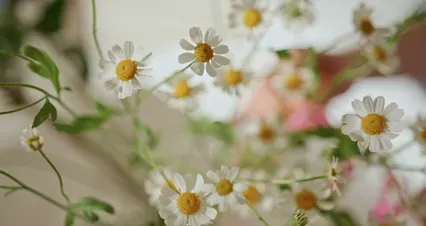
Incorporating herbs into your garden can enhance flavor while thriving in shaded areas. For more tips, check out Tips for growing herbs in small urban spaces.
Watering Techniques
Watering shade-grown vegetables requires a slightly different approach. Plants in shaded areas often experience slower evaporation rates. This means they may not need as frequent watering as those basking in the sun. However, don’t be fooled! Just because the soil retains moisture longer doesn’t mean you can neglect it.
Different vegetables have varying moisture needs. Leafy greens like spinach and kale enjoy consistently moist soil. On the other hand, root vegetables such as carrots and beets appreciate slightly drier conditions. To keep your crops happy, perform a quick finger test. Stick your finger into the soil; if it feels dry about an inch down, it’s time to water!
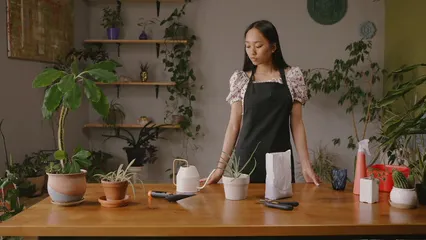
Mulching is your secret weapon here. Apply a layer of organic mulch around your plants. This helps retain moisture and keep roots cool. Plus, it suppresses those pesky weeds that love to crash your garden party. Straw, wood chips, or shredded leaves work wonders. Just think of it as a cozy blanket for your veggies!
Pest Control
Shady gardens can attract some unwanted guests. Slugs and snails love the damp, dark environment. They can munch through your precious leafy greens faster than you can say “garden salad.” Keep an eye out for these slimy critters!
Natural pest control methods can help you combat these nuisances. Try placing crushed eggshells around your plants; they create a rough barrier that slugs dislike. Beer traps can also do the trick—leave a shallow dish of beer in your garden. Slugs will be attracted to the scent, fall in, and won’t be coming back for seconds!

Monitoring your garden regularly is essential. Check for any signs of damage or pest activity. Early detection means early intervention. You can also introduce beneficial insects, like ladybugs, which feast on aphids. Just think of them as your garden’s little superheroes!
Strategic Planting
Strategic planting can make all the difference in shady areas. Companion planting is a brilliant technique to maximize growth. Certain vegetables help each other thrive when planted together. For example, planting basil near tomatoes can enhance flavor and deter pests. Similarly, intercropping leafy greens with taller plants can protect them from intense sunlight.
Succession planting is another effective method. This involves planting a new crop as soon as one is harvested. For instance, after pulling up your spinach, sow some beans. This keeps your garden productive throughout the growing season, ensuring you have a continuous supply of fresh veggies.

Using containers is a smart choice for shaded gardens. Containers can be moved to optimize sunlight exposure. Plus, they allow you to create a microclimate that’s perfect for your plants. You can easily reposition them to take advantage of any available light, making it easier to grow a variety of crops in limited space.
Reflecting Light
Enhancing light exposure in shady areas can be achieved with a few clever tricks. Reflective surfaces can work wonders! Position white or light-colored materials near your garden. This could be a simple white fence or even light-colored stones. These surfaces bounce sunlight back to your plants, giving them a much-needed boost.
Consider using light-colored mulches as well. They not only help retain moisture but also reflect light back onto your plants. Straw-colored wood chips or white pebbles can make your garden look snazzy while helping your veggies thrive.
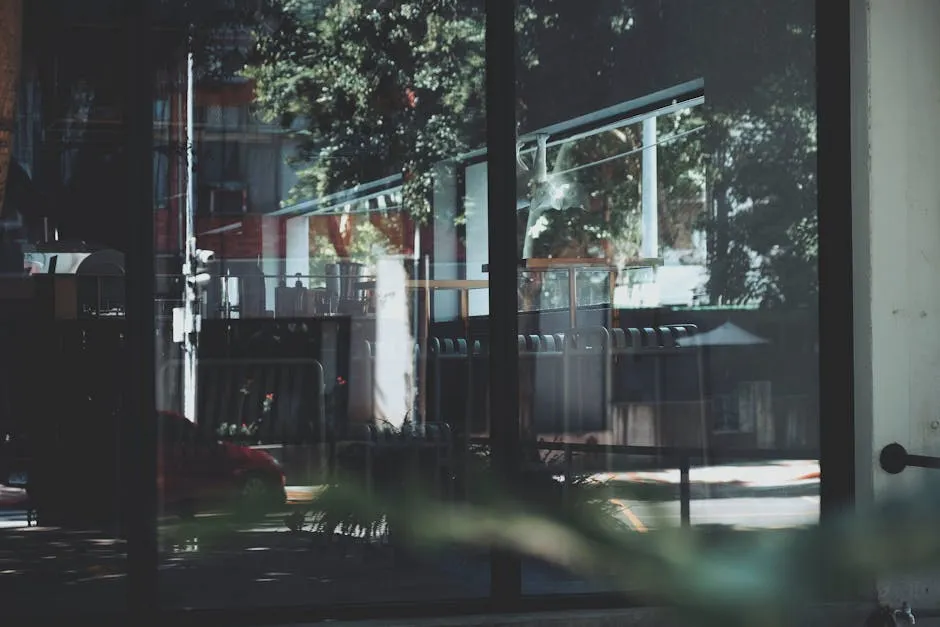
Pruning nearby trees or shrubs can also improve light access. A little trimming here and there can go a long way. By allowing more sunlight to filter through, you’ll create a happier, healthier garden. Embrace these techniques, and watch your shady garden flourish!
Seasonal Considerations
Timing Your Planting
Timing is everything in gardening, especially in shady areas. Spring and fall are prime times for planting. Why? Well, shaded soils warm up slower than their sun-kissed counterparts. So, if you plant too early, your seeds might just sit there sulking in the cold, damp soil.
Take a beat and wait for the soil to reach a warm and inviting temperature. You can test this by sticking a finger in the ground (but, please, not for too long!). As a rule of thumb, wait about a week or two after the last frost date. This gives your seeds the best shot at sprouting happily.
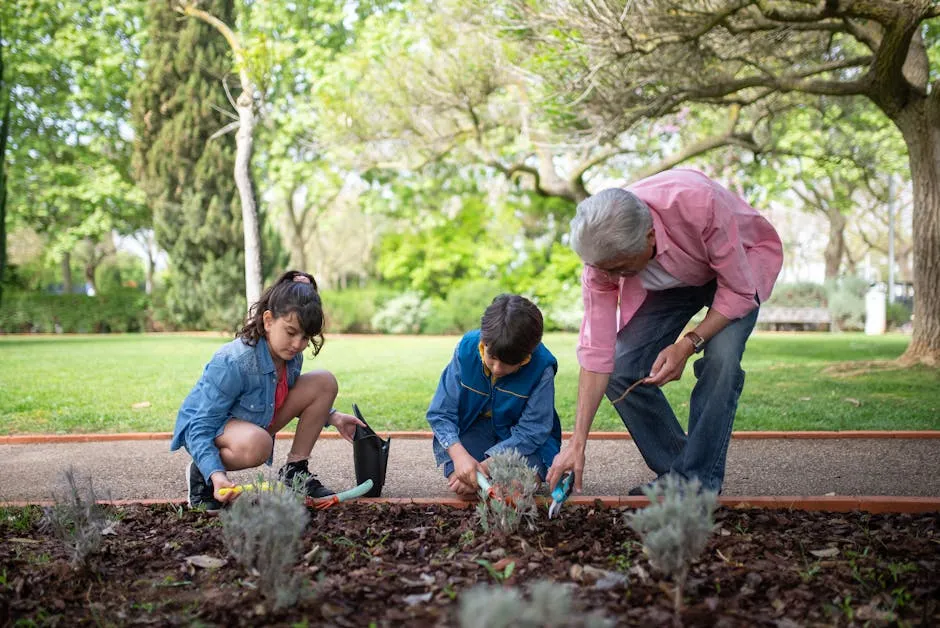
In fall, make sure to plant early enough for your crops to establish before winter sets in. Vegetables like kale and spinach can handle a nip of frost, but you want to avoid their roots freezing solid in the ground. By timing it right, you’ll set the stage for a bountiful harvest, even from the shade.
Crop Rotation
Crop rotation may sound like a fancy term, but it’s a simple concept with powerful benefits. Rotating crops helps maintain soil health and prevents diseases from taking root. In shaded gardens, it’s crucial to mix things up.
Consider planting leafy greens one year and root vegetables the next. This prevents nutrient depletion and keeps pesky pests confused. For example, after a year of growing spinach, try planting carrots. They’ll thrive off the leftover nutrients while keeping potential diseases at bay.

Aim for a 3-4 year rotation cycle. This gives your soil time to recover and replenish. Plus, it’s like a fresh start for your garden each season! Shaded gardens thrive when you keep their plant guests on their toes. Rotate wisely, and your soil will thank you with healthy, vibrant crops.
Conclusion
In conclusion, growing vegetables in shady areas is not just a pipe dream. With careful planning and the right techniques, you can have a thriving vegetable garden even in low-light conditions. Remember to time your planting for optimal conditions, and don’t underestimate the power of crop rotation in maintaining soil health.
Shaded gardens offer a unique opportunity to experiment with various crops. Don’t shy away from those corners of your yard that don’t bask in sunlight. Embrace the shade and let your creativity flow! With the right knowledge and techniques, you’ll discover that vibrant, successful vegetable gardens can flourish, even in the shadows. Happy gardening!

FAQs
What vegetables grow best in full shade?
If you think full shade means the end of your vegetable dreams, think again! Some plants thrive even in those dark corners. Leafy greens like spinach and kale are your go-to choices. They flourish in low light, often sporting vibrant leaves without the bitter taste of sunburned siblings. Herbs such as mint and parsley also love the shade, adding flavor to your dishes without breaking a sweat.
Can I grow tomatoes in shaded areas?
Tomatoes are sun worshippers, needing at least six hours of direct sunlight daily. While they can tolerate some morning shade, too much will leave them sulking. If you’re determined to grow tomatoes, consider a spot where they can soak up some sun. If not, stick to shade-loving crops that can handle those dim conditions.
How much sunlight do leafy greens need to thrive?
Leafy greens are the chillest of the vegetable crew. They typically need around 3-4 hours of sunlight. That means they can lounge in the shade while still growing strong! Just make sure they’re not completely overshadowed by larger plants. A little dappled sunlight can work wonders.
What are the best practices for watering shade-grown vegetables?
Watering in the shade is a bit like giving your plants a spa day. Since shaded areas retain moisture longer, you won’t need to water as frequently. Check the soil moisture with a quick finger test. If it’s dry an inch down, it’s time to hydrate! Mulching helps keep the soil moist and reduces pesky weeds that want in on the action.
How can I improve my soil for shaded gardening?
Shady gardens often need a little extra love in the soil department. Start by adding organic matter like compost or well-rotted manure to enrich the soil. Mixing in these nutrients helps improve drainage and promotes a healthy root system. Healthy soil is the foundation of a thriving garden, even in the shade. So, roll up those sleeves and get digging!
For those looking to enhance their gardening experience, consider a Garden Kneeler and Seat to make your gardening endeavors more comfortable.
Please let us know what you think about our content by leaving a comment down below!
Thank you for reading till here 🙂
All images from Pexels
